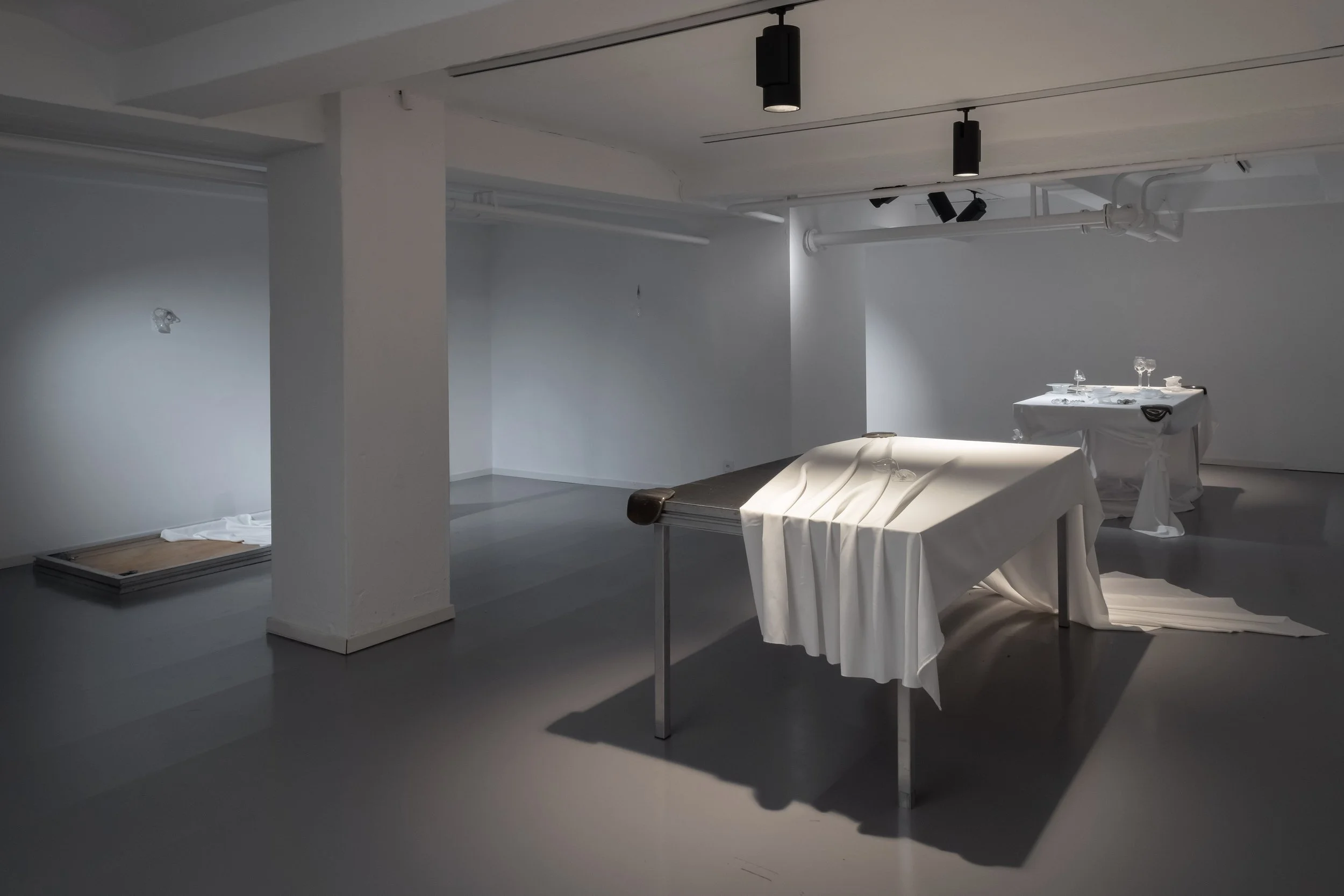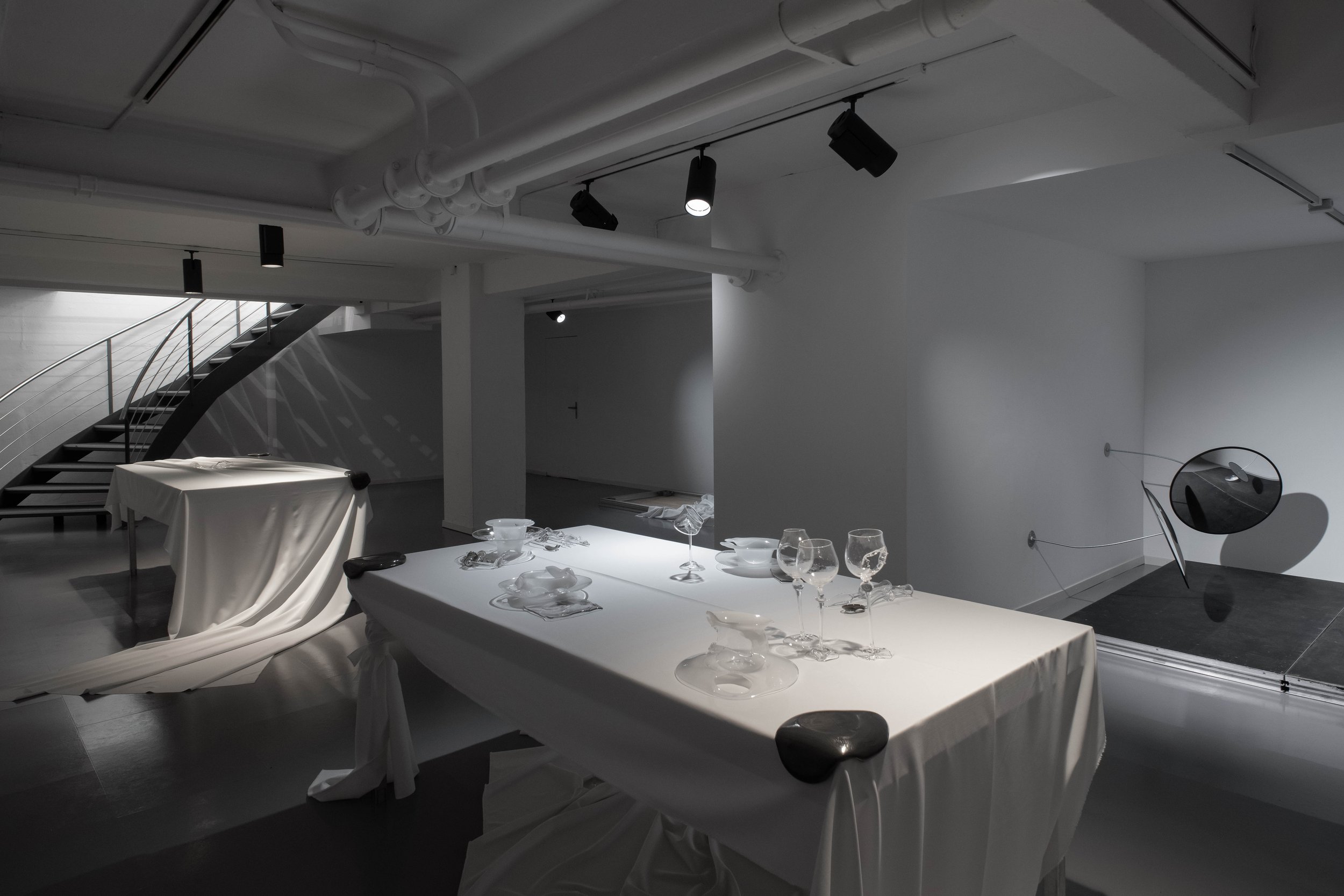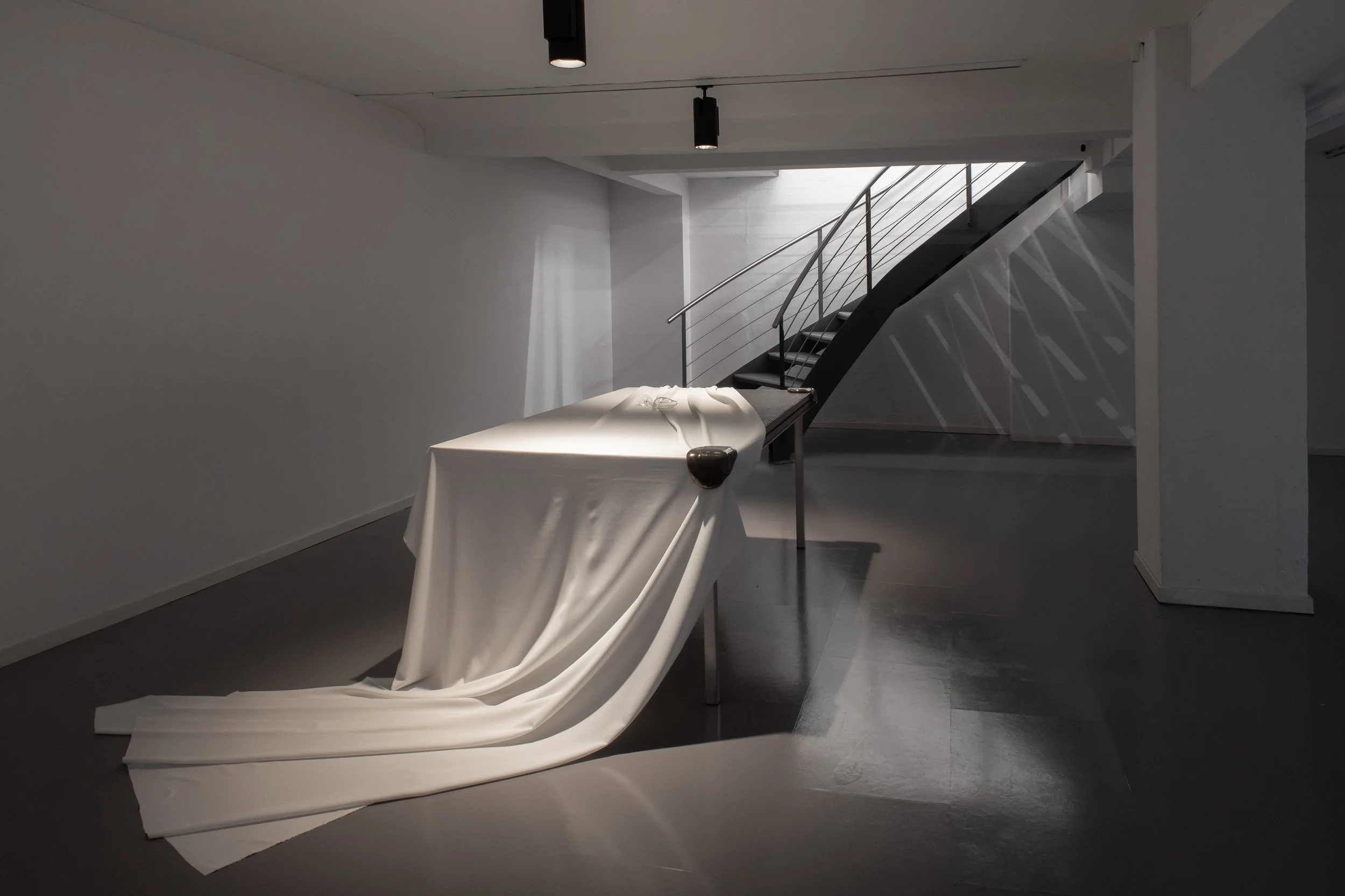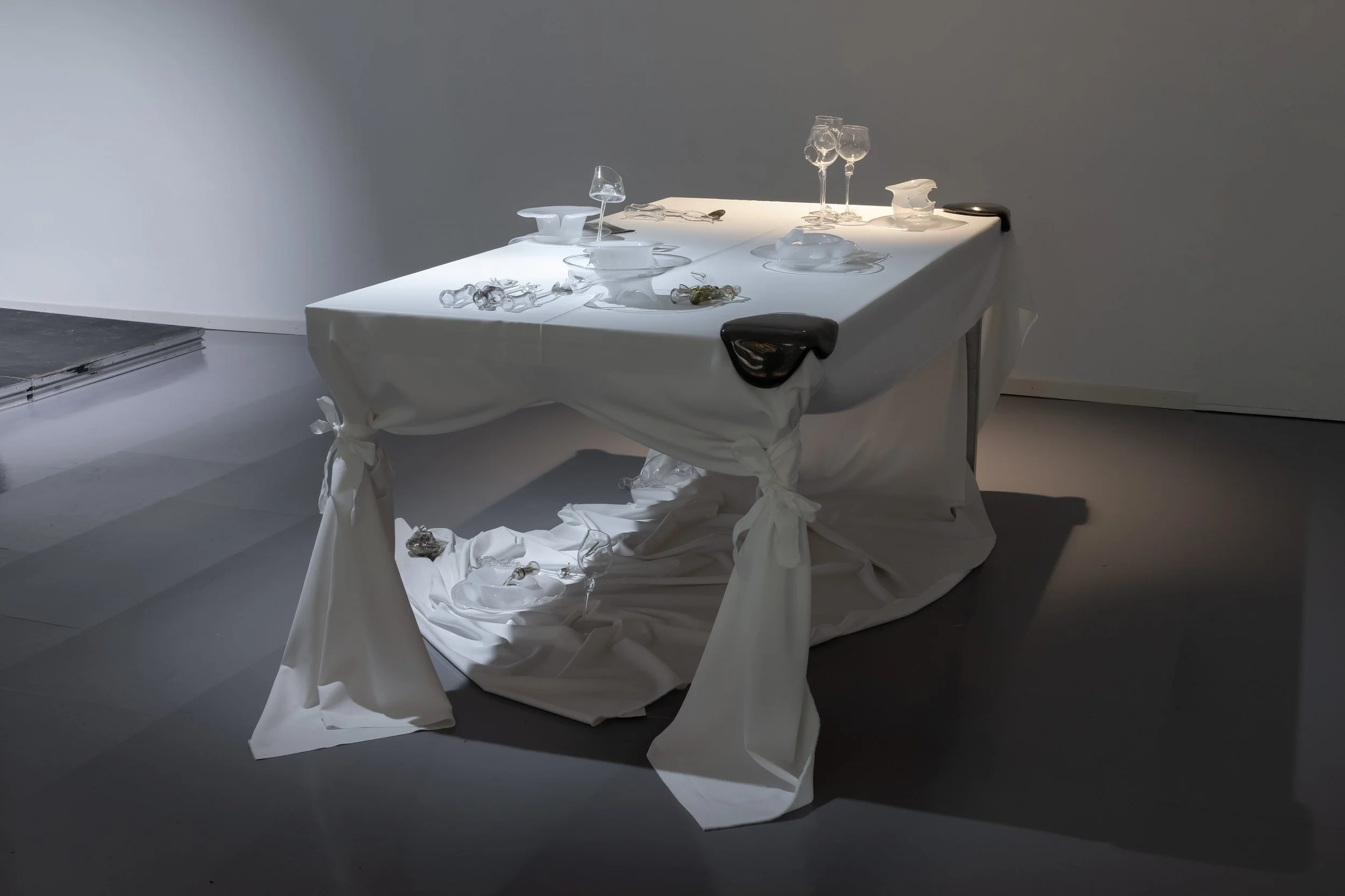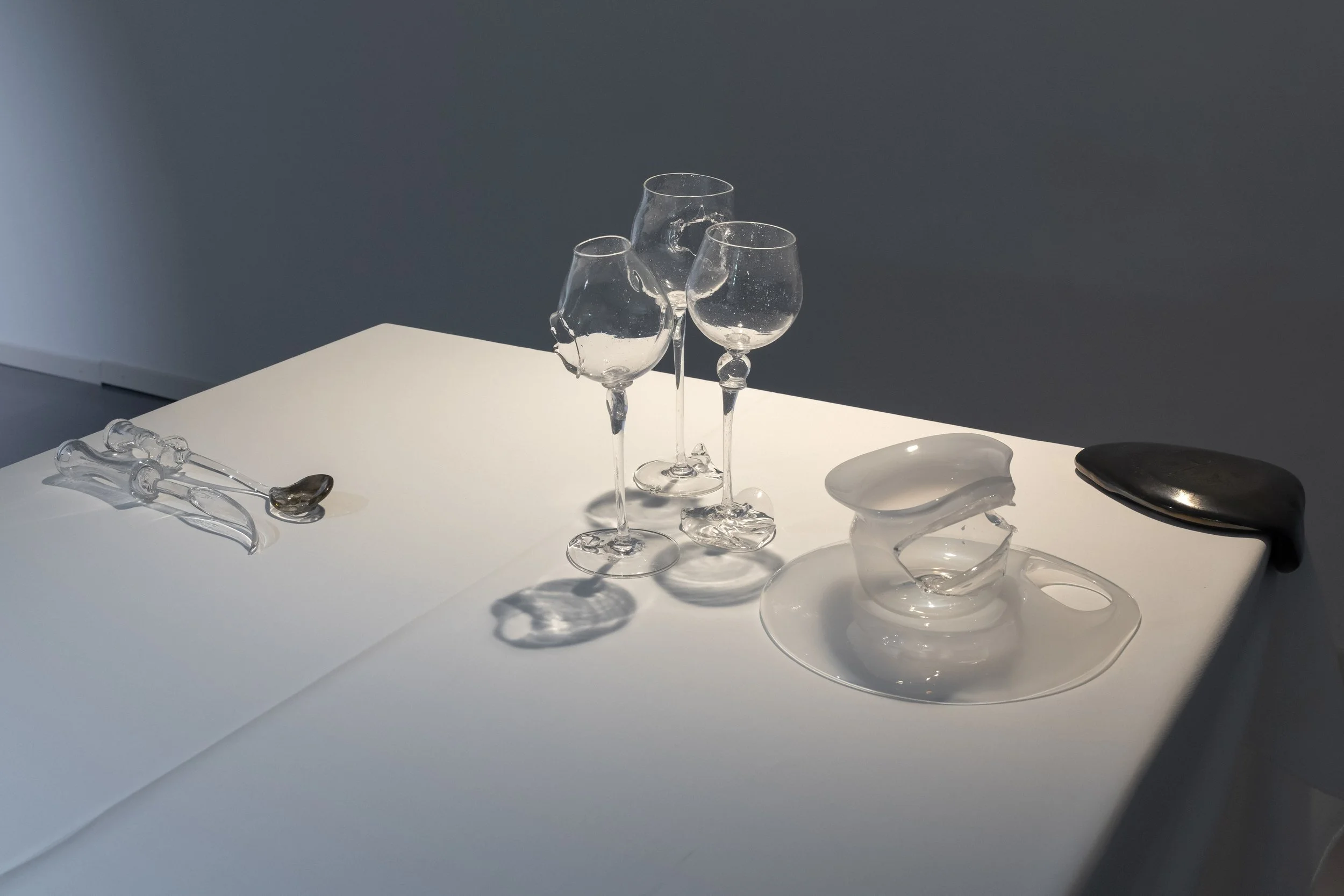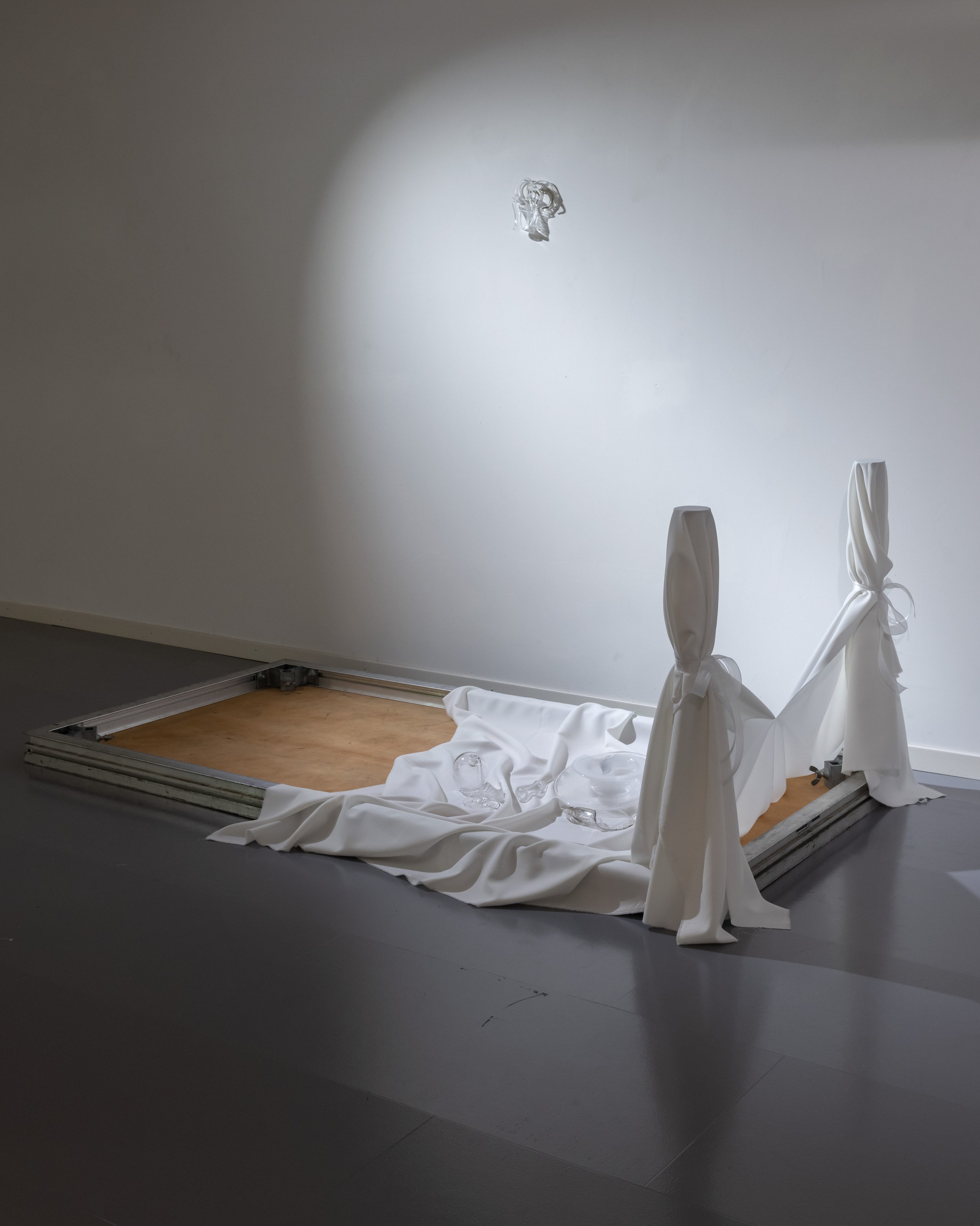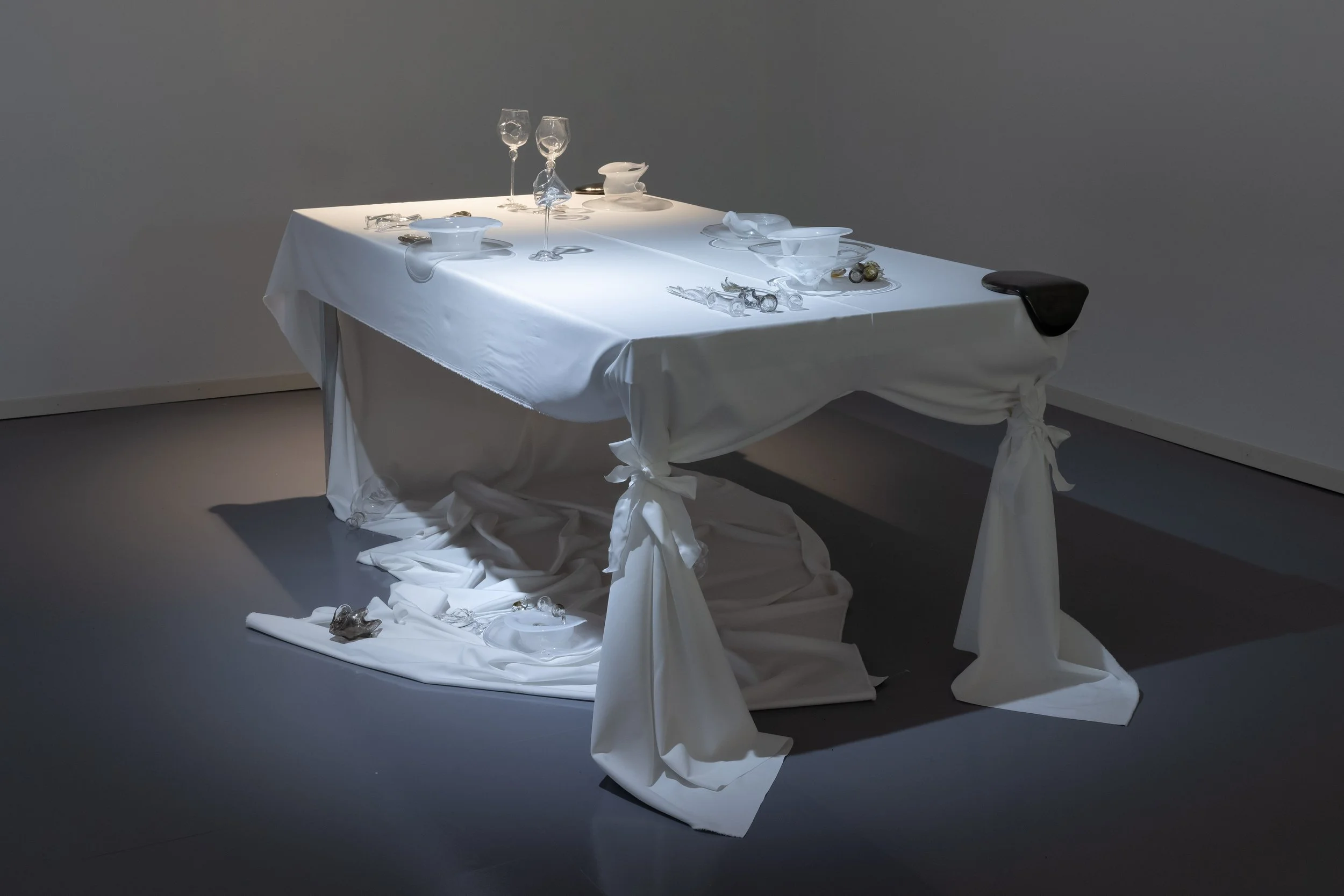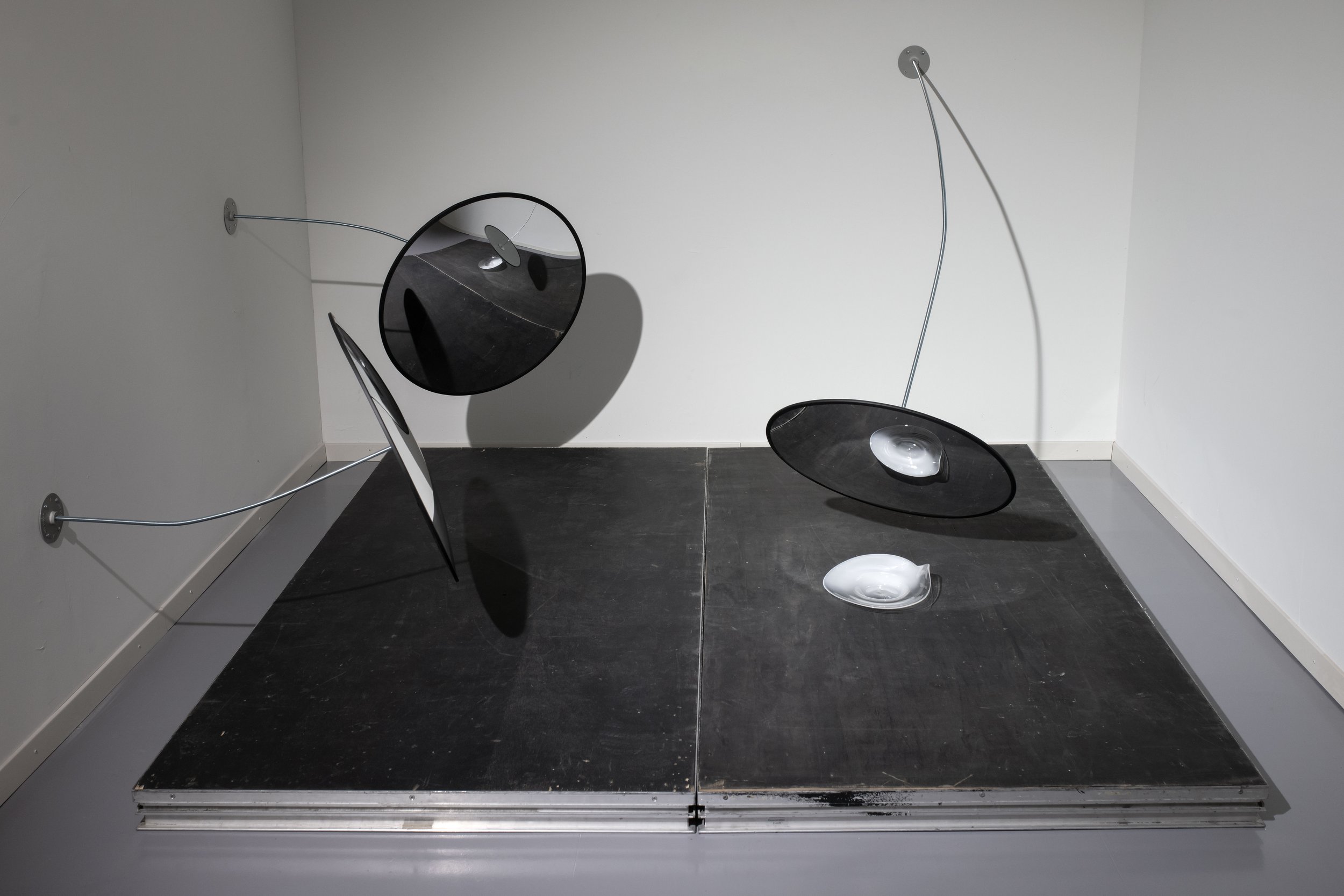Press release
Blue Velvet Projects is pleased to announce A Familiar Hole, a solo exhibition by Swiss-Brasilian artist PRICE (1986, Rio de Janeiro). Working across performance, musical composition, and sculpture PRICE explores the breakdown of institutional and cultural conventions through the representation of bodily gestures. A Familiar Hole stages a theatrical encounter that collides structures of established power with Guy Hocquenghem’s concept of an “equivocal mask”. PRICE’S dramatic set pieces at the center of the exhibition reflect an ability to move through often-contradictory forms of desire under different guises.
Snaking through the gallery’s lower level is a large banquet table set with unique glass-blown tableware — plates, soup bowls, napkins, utensils, and wine glasses. The work allows PRICE to explore different performances and positions of power: those who feed, are fed, are invited in, and the ‘Parasito’, or person who dines at another’s table, eating their food and in turn offering nice company. Polite ambiguity, in other words, is how one gets through dinner: by switching sides, breaking wholes into smaller, less appetizing parts, by desiring and counter-desiring.
The delicate tableware projects at once a kind of glistening abundance but also — and revealed on closer inspection—shapes bent and cleaved open. This transformation across a single form — from robust to deformed — highlights the processes of disintegration that have developed out of PRICE’S multi-sensory live performances. These objects begin to reflect the competing desires often associated with hunger: missing, needing, being satisfied, wanting more, feeling full. The textures of glass also reverberate around the space in other architectural elements inviting multiple and sometimes elusive points of view. Stage lighting illuminates competing focal points, while traffic mirrors and other reflective surfaces reveal new information hidden in plain sight.
Within the art world, the dining table has long been the dominant form of sociality. In performance and social practices, the table has encouraged participation and collectivity, while also imposing a set of spatial boundaries and hierarchies. The table’s power rests in its material abundance, as well as its social influence, and it is this bourgeois matrix of influence that PRICE elevates and ultimately skewers. In emphasizing both the oppressive and liberatory possibilities of the dining table, PRICE is influenced by Sara Ahmed’s analysis of the table, and the critical focus on the web of invisible labor that makes its functioning possible. Instead of a site of centralized (oppressive) knowledge production, the table (used for both work and dining) becomes a site of assembly.
A Familiar Hole’s many dissonances heighten the viewer’s senses, inviting them to navigate the exhibition based not on familiar referents but on intuition. For PRICE, dissonance is a kind of respiration that embodies both automation and anticipation. The dining table also aligns with the stomach: an apparatus that craves, assimilates, and then breaks down. A pristine table setting transforms into a canvas of spills, tears, and waste. Host, guest, head of the table, plus one; everybody is a Parasito (para — next to; sitos — food). Positions of power and influence have not disappeared, but are unstable, up for grabs.
As a final gesture, PRICE has composed dinner music for piano to amplify the exhibition’s performance of pleasant ambience. Interrupting the melody, however, is PRICE’S own recorded singing, which emerges as chewed-up and broken linguistic fragments. The musical composition, another equivocal mask, neutralises or hides the political meaning of the table and its settings. A Familiar Hole showcases PRICE’S polymorph theatricality and constructs a dramatic arc from the concrete to the ephemeral, the political to the personal.
Text by Annie Goodner
Untitled, 2022 Glass object, sound track "Big Once" (gallery version) 1/5 + 1 artist proof Dimensions variable
Untitled, 2022 Stage elements, glass objects, cloth, sound track "Big Once" (gallery version) 1/5 + 1 artist proof Dimensions variable
Untitled, 2022 Stage elements, glass objects, cloth, sound track "Big Once" (gallery version) 1/5 + 1 artist proof Dimensions variable
Untitled, 2022 Glass objects, sound track "Big Once" (gallery version) 1/5 + 1 artist proof Dimensions variable
Untitled, 2022 Stage elements, glass objects, cloth, sound track "Big Once" (gallery version) 1/5 + 1 artist proof Dimensions variable
Untitled, 2022 Stage elements, glass object, convex mirrors, sound track "Big Once" (gallery version) 1/5 + 1 artist proof Dimensions variable
